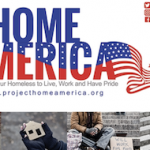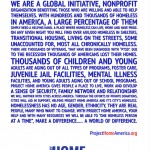The grim stats from around California have piled up in recent weeks:
In Alameda County, the number of homeless residents jumped 43 percent over the past two years. In Orange County, that number was 42 percent. Kern County volunteers surveying the region’s homeless population found a 50 percent increase over 2018. San Francisco notched a 17 percent increase since 2017.
And on Tuesday, Los Angeles officials released the results of their most recent count: Homelessness was up by 12 percent over last year in the county and up 16 percent in the City of Los Angeles.
That puts L.A. County’s homeless population at 58,936 and the city’s at 36,300.
And yet, communities around the state have been funneling more money into services for the homeless, like L.A.’s Measure H sales tax, which is adding about $355 million each year to the arsenal.
[Read about why some are rethinking homelessness in the Bay Area as a regional issue.]
So why are more people living in squalid conditions on the streetsor in cars? Advocates for the homeless say it’s upsetting, but no surprise.
In Alameda County, the number of homeless residents jumped 43 percent over the past two years. In Orange County, that number was 42 percent. Kern County volunteers surveying the region’s homeless population found a 50 percent increase over 2018. San Francisco notched a 17 percent increase since 2017.
And on Tuesday, Los Angeles officials released the results of their most recent count: Homelessness was up by 12 percent over last year in the county and up 16 percent in the City of Los Angeles.
That puts L.A. County’s homeless population at 58,936 and the city’s at 36,300.
And yet, communities around the state have been funneling more money into services for the homeless, like L.A.’s Measure H sales tax, which is adding about $355 million each year to the arsenal.
[Read about why some are rethinking homelessness in the Bay Area as a regional issue.]
So why are more people living in squalid conditions on the streetsor in cars? Advocates for the homeless say it’s upsetting, but no surprise.
“Our housing crisis is our homeless crisis,” Elise Buik, president and chief executive of the United Way of Greater Los Angeles, told me. “And we’ve got to get people to understand that.”
She said that people struggling with mental illness or substance abuse issues and who are living in encampments are often the most visible, but it is a myth that people experiencing homelessness decline help or prefer to live outdoors — one that contributes to misconceptions about the effectiveness of often costly services.
Peter Lynn, executive director of the Los Angeles Homeless Services Authority, emphasized that the Measure H money has significantly increased the number of people the region’s service providers have been able to help.
According to the authority’s data, outreach workers engaged with 34,110 people over the year, which was triple the number before Measure H.
And almost 1,400 permanent supportive housing units built with money from Measure HHH, a $1.2 billion bond, are set to open in the 2019-20 fiscal year.
“I do feel like the first honest year to assess will be to freeze frame from now to next year,” Mayor Eric Garcetti of Los Angeles told me late last week.
Ultimately, though, he said housing affordability was the biggest factor driving homelessness.
An Angeleno would need to earn $47.52 an hour just to afford the median monthly rent, according to L.A.H.S.A. figures.
[Read more about why the state has a housing crisis.]
Although there’s broad acknowledgment — from Gov. Gavin Newsom on down — that part of the solution is millions more homes, legislative fixes that would spur housing construction have proven knotty, to say the least.
Senate Bill 50, which was effectively killed for the year, would have allowed for denser development in many areas, including some neighborhoods of single-family homes.
Mr. Garcetti said that bill was “definitely a bad stick for us.”
The bill would threaten neighborhood character, he said. And L.A., he noted, builds more than its proportional share of housing compared with the rest of the county.
Though Mr. Garcetti says he’s in favor of measures that would force other cities that aren’t allowing new construction to add to their housing supplies, he’s been focused on legislation that would slow skyrocketing rents. “This is the No. 1 issue in every city in California,” he said.







